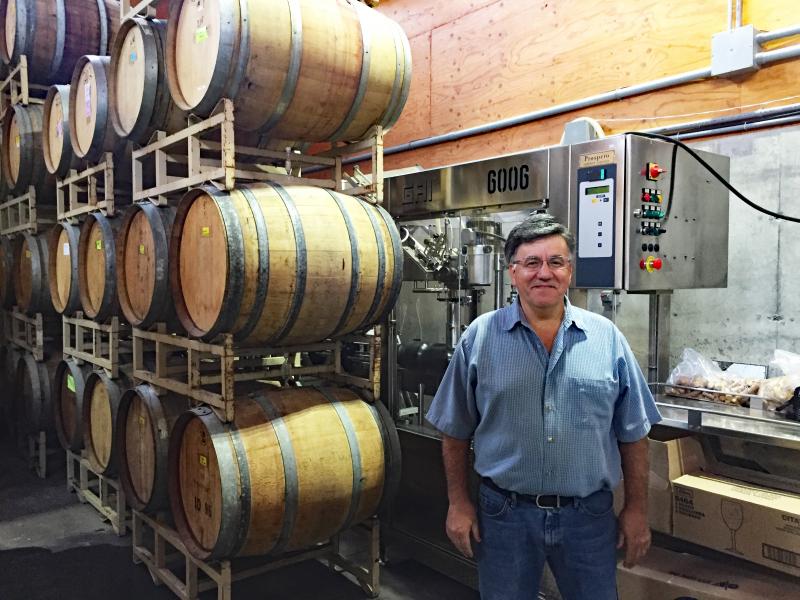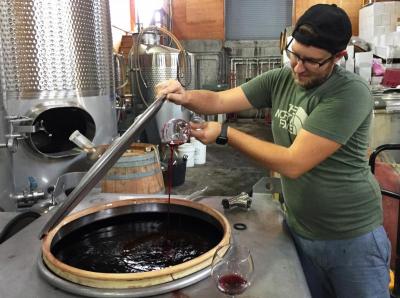Made in Dartmouth: Harvest time at Running Brook Vineyards
The first sight greeting visitors at North Dartmouth’s Running Brook Vineyard on Wednesday afternoon was a small yellow forklift next to two large oak barrels.
“Just a minute,” a voice shouted from somewhere behind stacks of casks.
It’s harvest time at Running Brook, a small vineyard, winery and distillery that makes a wide variety of beverages from grapes grown right in Dartmouth.
The menu includes red and white wine, brandy, and a host of liqueurs with different fruity and spicy flavors, including coffee and cinnamon.
A youthful face popped out from the back as Ian Edwards, operations manager and sole full-time employee, gave the rundown.
“Today we’re doing a little bit of everything,” he explained. “We did Cabernet Franc and Merlot yesterday, pressed that, got our juice, and are making some dessert wine with it.”
This week Edwards and dentist owner/winemaker Pedro Teixeira — along with volunteer family members and anyone else willing to help — are picking over a dozen grape varietals from the 12.5 acres of cultivated vineyard on Old Fall River Road.
After the clusters of grapes are hand picked and put into bright yellow boxes, they go into a machine that de-stems them, separating each individual grape, and then into a bladder press to squeeze out the juice.
Teixeira laughingly recalled one memorable day when friend and fellow winemaker Marco Montez of Westport Rivers Vineyard took off his shoes and stomped the grapes the traditional way.
“He wasn’t getting enough juice...It’s better for the grapes,” said Teixeira with a smile, noting that machinery can crush the seeds and add more bitter tannins to the juice. “But we don’t usually do that.”
The native Azorean grew up in California, so he always loved grapes and wine. He and partner Manuel Morais started the vineyard in 1998, and Teixeira bought Morais out in 2015.
Although he owns the whole operation, he still works there part-time, and works full-time as a dentist down in Pawtucket.
So Edwards helps him manage the day-to-day operations, which includes daily wine tastings and live music on weekends.
After yeast is prepped and added to the juice, the wines ferment for around a week before they are aged in stainless steel or barrels of American or French oak.
Sugar and alcohol content are carefully monitored, and each barrel is aged and blended as necessary to achieve the desired result.
“Winemaking is as much of a science as it is art,” said Edwards. He comes from a computer science background and uses his degree at a part-time job in IT.
Massachusetts — with its harsh winters — may not be the first place people would think to put a vineyard, but Teixeira said that it’s perfectly suitable despite the “stigma.”
And more and more vineyards and wineries are cropping up in the region. Edwards puts the number in Massachusetts at 46, with fewer actually growing their own grapes.
“It’s trying to grow what has never been grown here before, to figure out if we can do it,” said Teixeira.
“Every year is a risk,” Edwards noted.
The owner nodded. “If some plants do die in the wintertime, or we don’t have a lot of success, I’m not giving up,” he said. “We’re gonna replant.”















